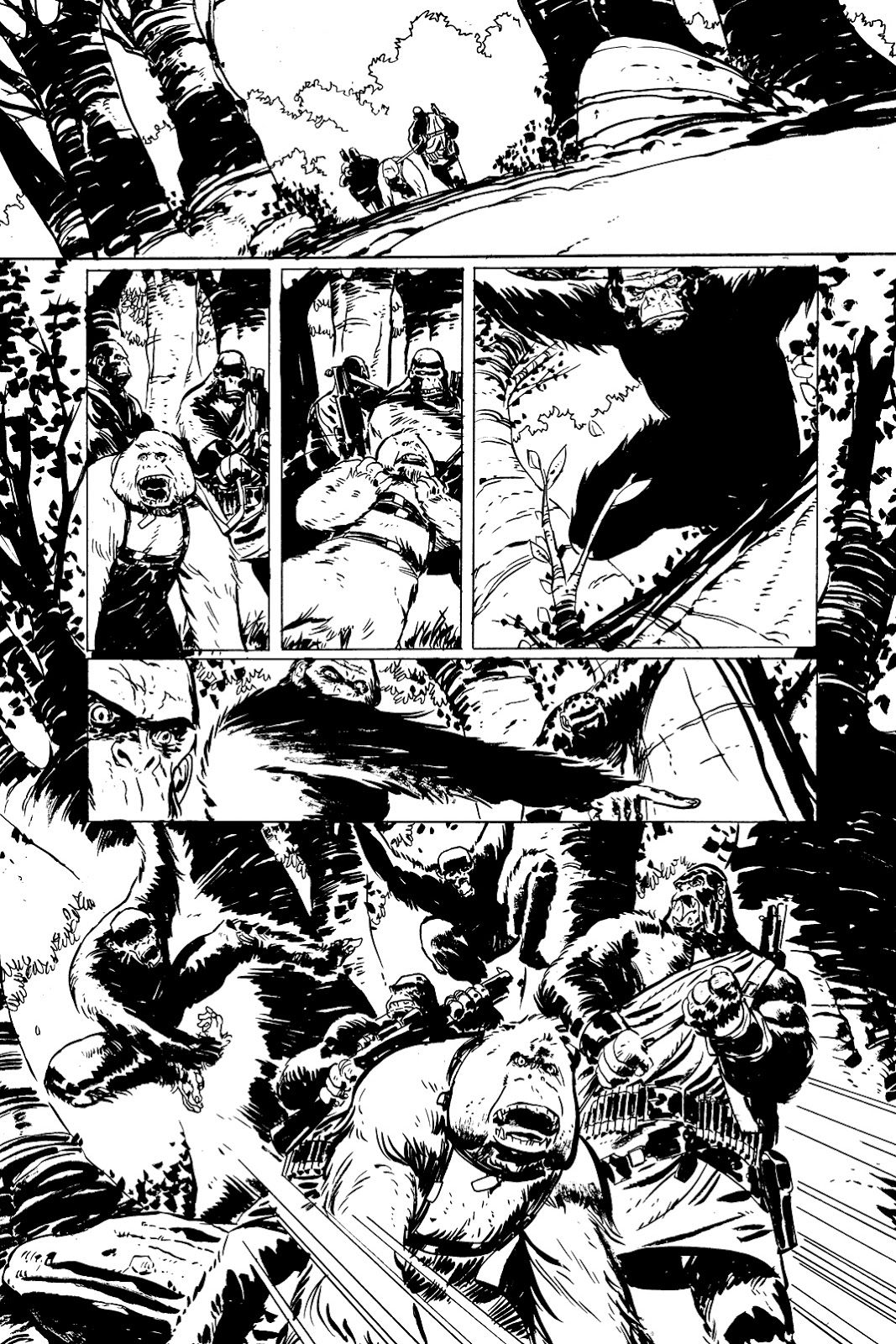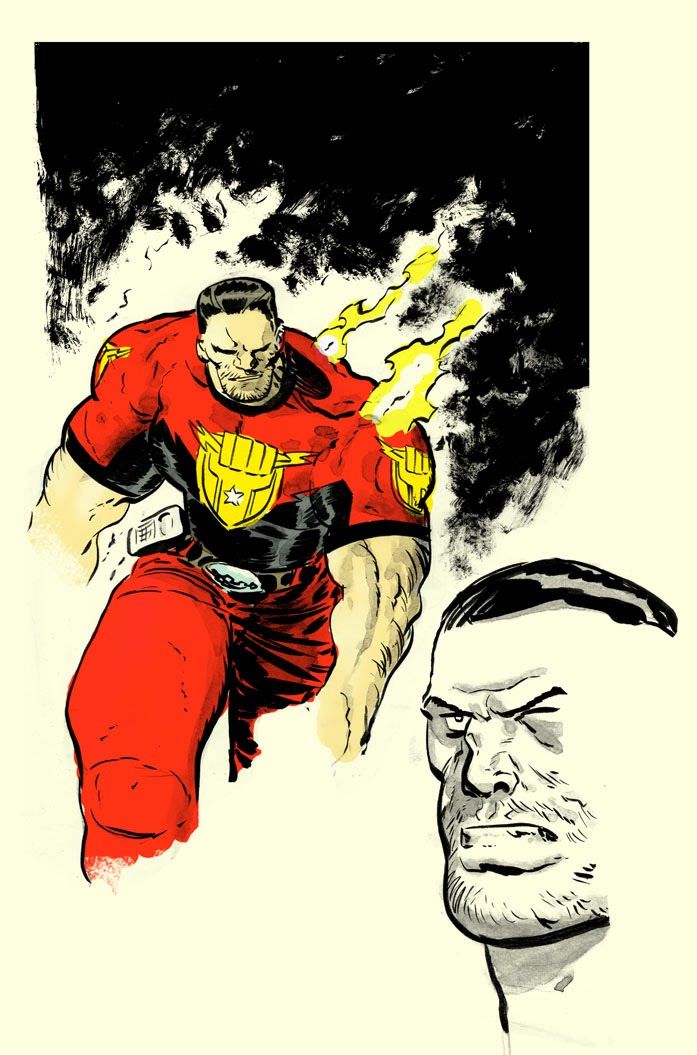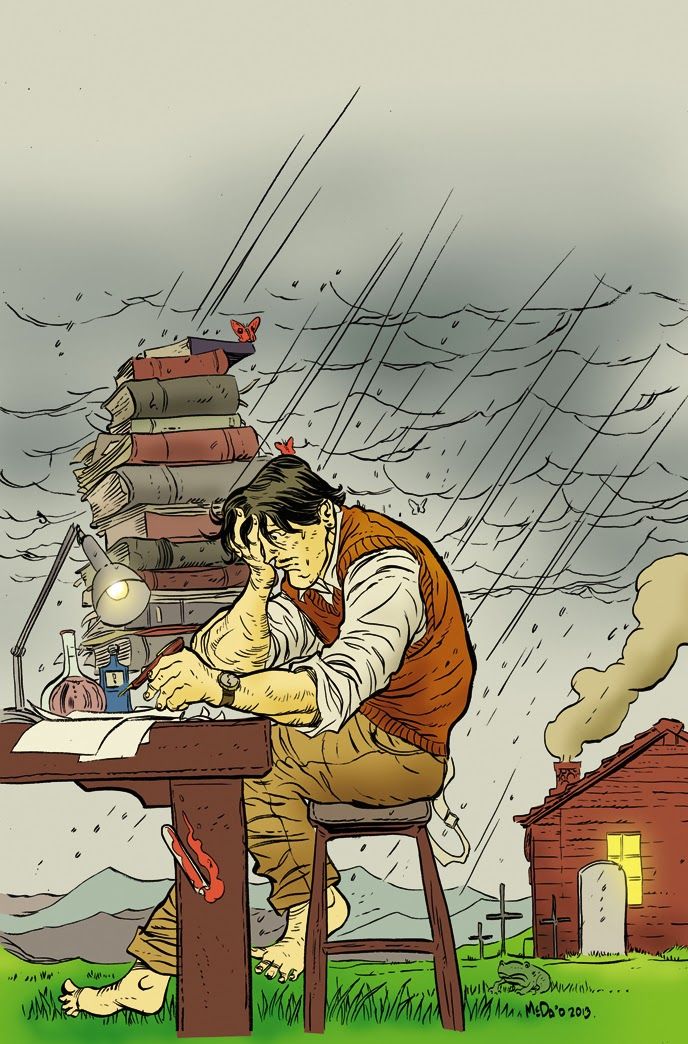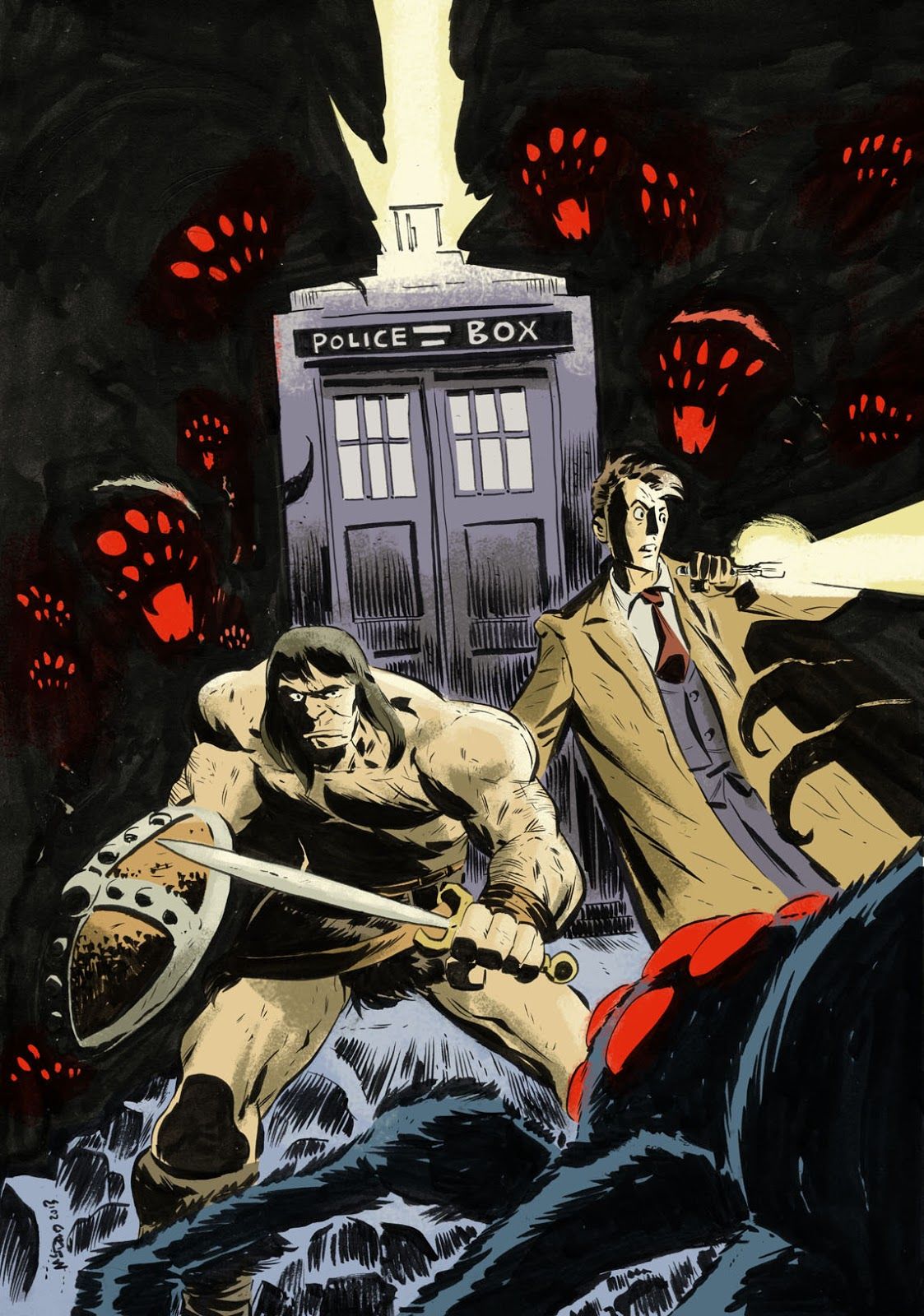You can do things in comics you can't do in any other medium, and U.K. cartoonist Dan McDaid has taken advantage of that in his work on Time Lords, superheroes, gods, monsters and apes -- and he's done it all without sacrificing his style. In fact, it's only invigorated him further.
McDaid is currently illustrating BOOM! Studios' Dawn of the Planet of the Apes, taking a novel look at that world while retaining the auteur vibe that made the original movie work. Combining a diverse array of influences, Jack Kirby to John Romita Jr. and Frank Miller to Mike Zeck -- even drawing in names like Nic Roeg and Sam Peckinpah -- McDaid seems to showcase a different facet of his abilities in each project he tackles.
I became aware of McDaid during his run on Jersey Gods at Image Comics, but it's Catalyst Comix that made me reconsider my assessment of his work. Since then, with Vandroid and issues of Mind the Gap and Sex, he's risen in my mind to become a dynamic illustrator whose talent seems to be building to some unknown future project that will make him a marquee name in comics. Will it be Dawn of the Planet of Apes? Will it be the creator-owned book he's working on? Or perhaps something else?
C
hris Arrant: What would you say a work day is like for you?
Dan McDaid: I get up, I watch terrible TV for about an hour, then I do a couple of hours of penciling. Then I have my lunch, and I spend the afternoon inking. Then I make love, then I have my tea. After that, I sleep.
You're working on Dawn of the Planet of the Apes for BOOM! Studios. What's it like to get into that world?
Really, really amazing. It's a total dream for a comic artist, a world in complete disarray, everything crumbling and broken down. Lots of texture and shadow, everything touched with melancholy and menace. And the films are so brilliant, with such a strong philosophical and emotional core ... It's just great to work within that.
Has it been difficult at all to draw the apes to look different from one another?
No, not really. The first thought is the same thought you have for drawing a human character -- give each individual ape some sort of key characteristic that makes them stand out. I don't mean like a hat or whatever; like their stance, or a scar or facial hair. That characteristic is usually suggested by the script -- like, a playful character should maybe have bigger eyes, unruly hair. So you're thinking about how outward appearance reflects inner character, and that flows from Michael's [Moreci] script through my pencils to Jason's [Wordie] final colors. It's organic. Hopefully.
How much did you refer back to the recent movies for what you're drawing in the comic?
Initially quite a lot for the likenesses and the feel. But from Issue 2, not at all, because you've more or less absorbed it by then. If I can sound pretentious for a second, there's a touch of auteurism to the Apes films, so I think it's important to let your own voice come through when you're working on them.
I've seen you talk about struggling to find the right way to draw something -- Captain America, for instance -- and being weighed down by how various artists have depicted him. For this comic, what earlier artist or filmographer's work is in your mind as you draw your pages?
Walt Simonson, Sam Peckinpah, David Mazzuchelli, Nic Roeg and the film The Wicker Man.
Are there other characters, outside Planet of the Apes, that's you particularly struggle with given their diverse interpretations over the years?
No ... I think my thoughts on the Captain America piece were more me working something out in my head -- what kind of an artist I'd like to be. So it's less of a struggle to get a character "right" and more about figuring out what my voice is, what will satisfy me creatively.
Do you feel like you're closer to figuring out what your voice is now than say, five years ago? And did you have any breakthroughs along the way?
Oh, yeah, definitely. I think the big breakthrough was probably Vandroid, which was a very intense, demanding job with a lot of time pressure. Under those conditions, I found I hit a certain sweet spot of ... not second-guessing myself, going on instinct. But also bringing a certain fury, an intensity to the page. A lot of ink, a lot of drama. So I was a different artist at the end of that process. If you read the book, you'll see that issue one Dan and issue five Dan aren't quite the same.
[gallery link="file" ids="199044,199043,199042"]
Looking at your work, some people see Jack Kirby influences, but for my money you have the heft of late 1980s/early 1990s John Romita Jr. and the shading of later-period Mike Zeck. Who would you say are the artists whose work molded your style?
Definitely those two; they loom pretty large. I was nuts for JRJR's Spider-Man when I was a kid, and was completely swept away by the first Secret Wars. And I also responded -- though I didn't know the names at the time -- to Frank Miller and Klaus Janson. They would occasionally do an issue of Spider-Man, usually with the Punisher crossing over, and their use of bold lines, heavy blocks of shadow and Zip-A-Tone really struck a chord. In the U.K., these books were reprinted at magazine-size and in black and white, so you could really get a good look at the art. Not an artist, but I was always fascinated by Jim Shooter as well. I would look for his name in the credits box at the beginning of a story, because to me it was a guarantee that the story would be good.
And what are you enjoying now in art?
I'm reading a lot of Walt Simonson Thor ... That's not really the right answer, is it? A pal of mine just lent me Jodorowsky and Moebius' The Incal, and it's blown my mind. I've come too late to Moebius, but I'm making up for it now. Same with Love and Rockets -- I'm reading it now, when my hair is thinning and my waistline is spreading. Should've read it in my 20s, but honestly, I probably wouldn't have got it back then.
CBR is a bit of home turf for you, as you were one of the finalists in the 2007 Comic Book Idol. How do you think that experience affected you?
It completely changed my life, and I desperately wish they'd run it again. Not because I'd want to have another go -- that would be insane -- but I think the comic industry needs these points of entry for talented people who need the exposure. Or maybe it doesn't, but either way it's a LOT of fun, so it should exist for that reason, if nothing else.
I first came across your work as a writer on Doctor Who Magazine, but if people haven't read those then they'd see you squarely as an artist. Are you looking to do more writing work, or do you enjoy drawing more?
I love to draw, and I'll probably always do it. But I'm very frustrated not to be writing more for the American market. I do miss it. With that in mind, I'm writing something of my own at the moment, a graphic novel. So we'll see where that goes.
Since we mentioned Doctor Who, could you see yourself returning to the character, as Titan's taken over the license?
Probably not. I'd love to if asked, but I'm not sure I'm on anyone's radar over there.
You never know. You've worked on some creator-owned books of others before, but could you see yourself breaking out with something of your own at some point?
Abso-fucking-lutely. I'm burning to do something like that, something creator owned, maybe even self-published. I look at what guys like Michel Fiffe and Doug TenNapel and Jeff Smith have done and think yeah, I want a piece of that. If this thing I'm working on goes well - which is to say, if I finish it - then my plan is to do more. I want a shelf of Dan McDaid books, you know. I want every home in America to have a shelf of Dan McDaid books!





